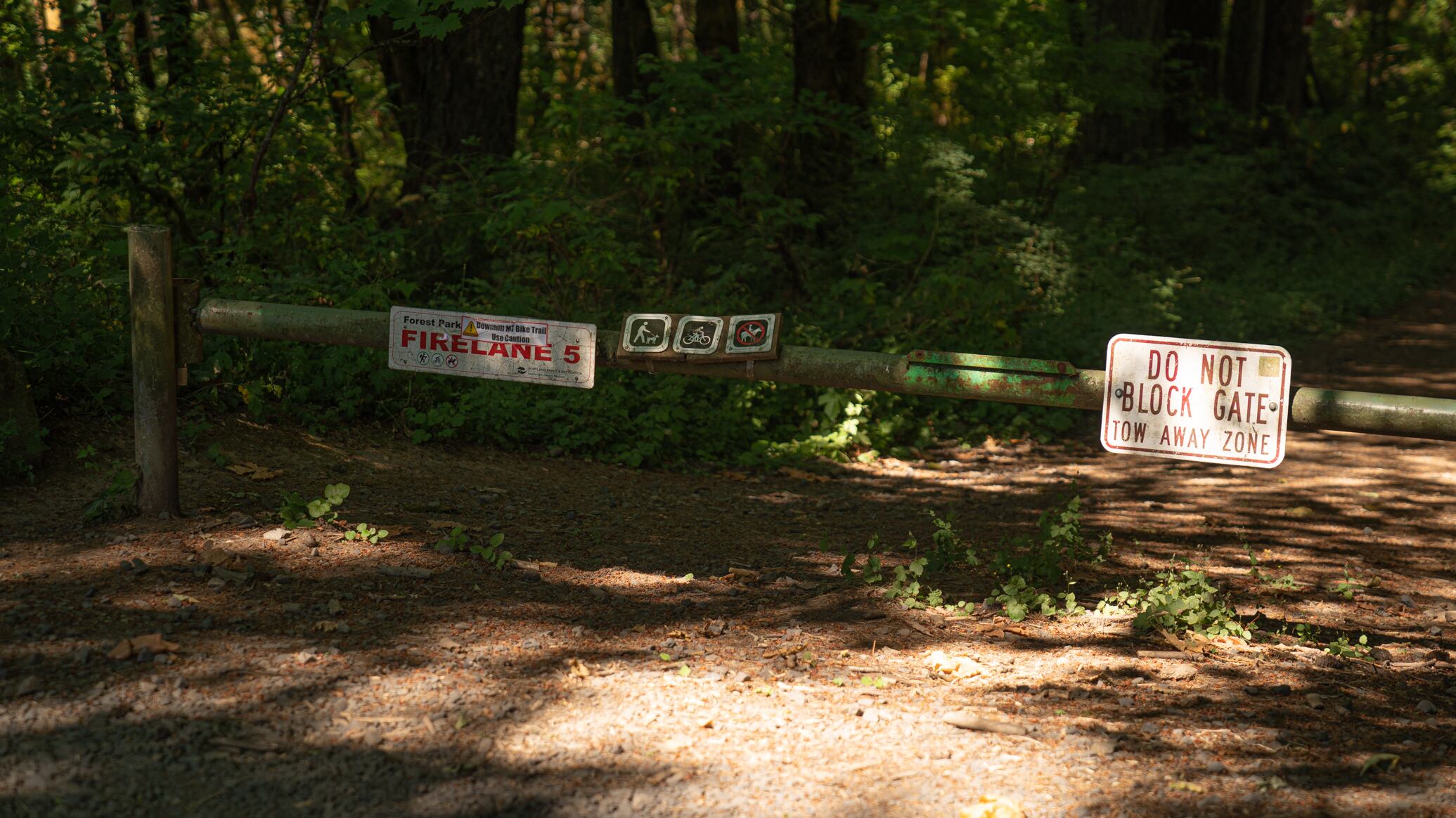Portland General Electric’s plan to upgrade transmission lines in Forest Park fails to show how plants and animals would be protected should it be allowed to remove 4.7 acres of trees for the project, staff at Portland’s Permitting & Development Office said.
The city agency published its 94-page report in preparation for a hearing on the matter Jan. 29. The report does not block the project. Rather, it presents recommendations to the hearings officer from city staff.
PGE’s plan, which the utility says is necessary to meet electricity demand in the Portland area, has drawn opposition from environmental groups that fear the tree-cutting will destroy habitat for animals such as the pileated woodpecker, sharp-shinned hawk, Roosevelt elk, white-footed vole, and northern red-legged frog, an at-risk species.
Permitting staff recommended denying approval of an environmental review of the project because it would permanently fill two wetlands, impact two streams, and remove 376 living trees and 21 dead ones.
Kristen Sheeran, vice president of policy and resource planning at PGE, said the company disagreed with the staff’s recommendation.
“Our land use application meets the land use approval criteria, provides strong justification for these urgent transmission upgrades in Forest Park, and proposes a robust mitigation plan to enhance natural resources, improve biodiversity and habitat, and help reduce the risk of wildfire in and beyond the project area, to improve the park and make it safer,” Sheeran said in a statement. “Though we appreciate city staff’s diligence throughout this process, we disagree with their conclusions and look forward to examining the issues in the upcoming hearing.”
The PGE lines in question are within existing easements and run parallel to those owned by the Bonneville Power Administration. They are at the northern end of Forest Park, beyond the St. Johns Bridge.
PGE’s plans include shifting the location of one power pole and rewiring a segment of existing transmission line to it, and installing two poles to support a new 1,400-foot transmission line. Both the upgraded and new lines would run from just inside Forest Park, across Highway 30, to PGE’s Harborton substation on the Willamette River.
PGE proposes to restore the logged area by planting a mixture of “shorter-stature tree species,” including Oregon white oaks. It plans to fix disturbed plants by adding a “native seed mix that contains pollinator-support species.”
Former U.S. Rep. Earl Blumenauer and former Mayor Charlie Hales wrote a letter of support for the project in October. Both men worked on the Forest Park Natural Resources Management Plan, which has governed the park since 1995. Blumenauer was city commissioner of public works responsible for planning and transportation. Hales was commissioner of both the Planning Bureau and Parks & Recreation.
“Our view was that the lines existed and, regardless how one might feel about them, were necessary for delivering reliable electricity in our region,” their letter says. “The plan offers guidance for the city and utilities to collaborate on conservation goals, but does not speak directly to a future need for expanded energy transmission. Our intention was not to prohibit any future development for this purpose. Given the current need for overdue grid improvements here and nationally to ensure reliability, address climate change, and transition to renewable energy, this is something Portland may want to revisit for the sake of clarity.”

